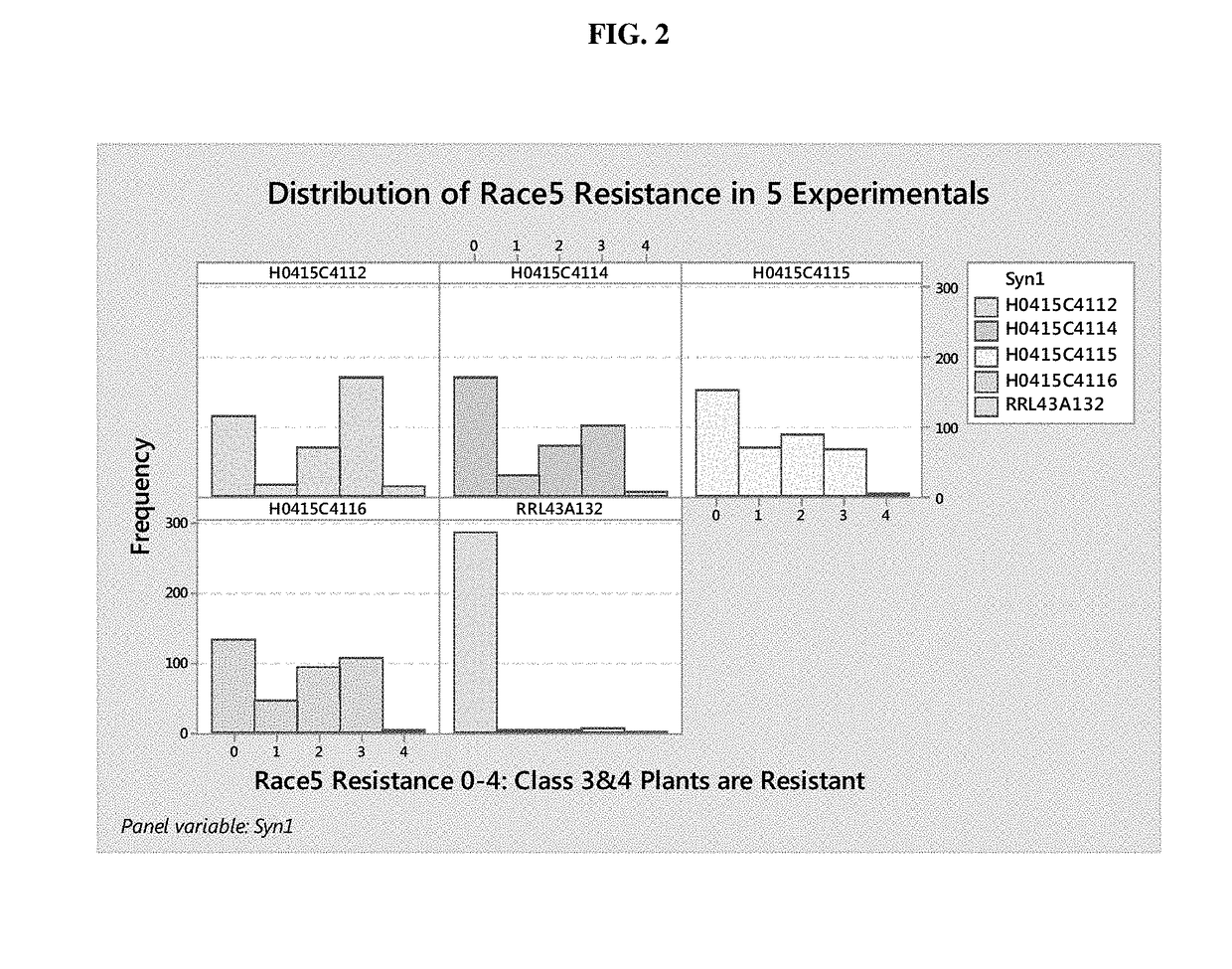Anthracnose Resistant Alfalfa Plants
anthracnose and alfalfa technology, applied in the field of agriculture, can solve the problems of crown rot, reduced winter survival, stem death, etc., and achieve the effects of increasing resistance to colletotrichum trifolii race 5, and increasing resistance to colletotrichum
- Summary
- Abstract
- Description
- Claims
- Application Information
AI Technical Summary
Benefits of technology
Problems solved by technology
Method used
Image
Examples
example 1
Identification of Emerging Anthracnose Race
[0083]Low levels of anthracnose symptoms were observed in field trials of alfalfa varieties resistant to Race 1 and Race 2 anthracnose. The pathogen was cultured and used to inoculate Saranac AR seedlings (Saranac AR is an approved resistant line for both Race 1 and Race 2 anthracnose). In this initial test, no resistant Saranac AR plants were observed, suggesting the development of a new race of the pathogen.
[0084]A screening of proprietary breeding populations for resistance to the new pathogen was thus initiated. Although low levels of resistance were found in a few breeding populations, almost all of these “resistant” plants succumbed to the disease 1-2 months later. This latent infection and late symptom development on seedlings is very uncharacteristic for Race 1 and Race 2 anthracnose. These results indicated that previously known resistance to anthracnose was not effective against the new race, identified as Race 5.
example 2
Anthracnose Screening Assay
[0085]A systematic study was developed to assess the effect of several variables in the standard anthracnose screening process. Variables evaluated included the use of inoculum from the new race of the pathogen, inoculum concentration, length of incubation time, and timing of selection of resistant plants. This led to the development of an assay that accurately identified anthracnose resistance, allowing for the identification of plants comprising resistance to the newly identified anthracnose race.
[0086]To develop the assay, a needle inoculation procedure was performed. In the needle inoculation procedure, plants having stems of approximately 10 inches or longer were selected. The stems were taped at least 8 inches above the soil to prevent the disease from spreading into the roots. Inoculum was prepared by swirling 1 drop of tween with 100 mL of distilled water in a beaker. The swirled solution was then poured into dishes of anthracnose spores. A rubber ...
example 3
Identification of Race 5 Anthracnose-Resistant Lines
[0088]In Year 1, phenotypic screen of fall dormancy 4-5 germplasm was conducted, and a very low frequency (31% resistant plants. Segregation ratios during this breeding process suggest a single gene, with partial dominance that provides resistance to Race 1, Race 2 and the new Race 5.
PUM
| Property | Measurement | Unit |
|---|---|---|
| height | aaaaa | aaaaa |
| resistance | aaaaa | aaaaa |
| Disease resistance | aaaaa | aaaaa |
Abstract
Description
Claims
Application Information
 Login to View More
Login to View More - R&D
- Intellectual Property
- Life Sciences
- Materials
- Tech Scout
- Unparalleled Data Quality
- Higher Quality Content
- 60% Fewer Hallucinations
Browse by: Latest US Patents, China's latest patents, Technical Efficacy Thesaurus, Application Domain, Technology Topic, Popular Technical Reports.
© 2025 PatSnap. All rights reserved.Legal|Privacy policy|Modern Slavery Act Transparency Statement|Sitemap|About US| Contact US: help@patsnap.com



